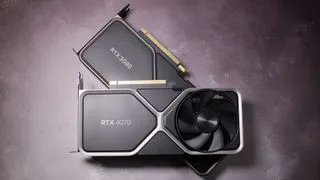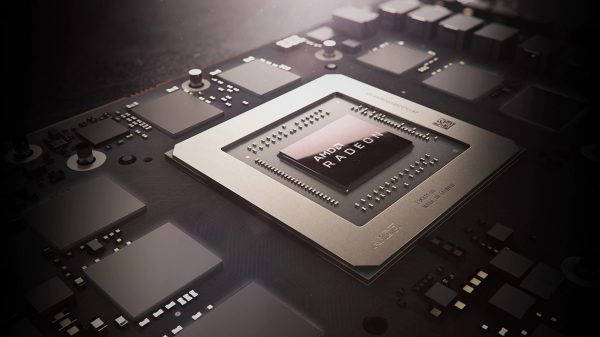A recent AMD patent has sparked excitement among tech enthusiasts, revealing a novel design for future graphics cards. The patent, filed in December 2022, describes a multi-chiplet GPU architecture, which could potentially improve performance and reduce production costs. This innovative design may finally bring us closer to achieving the elusive “modular” GPU, a concept that has long fascinated gamers and tech enthusiasts alike.
The patent outlines a GPU comprising three separate dies, or chiplets, which can operate independently or in tandem. The first mode sees all chiplets working together as a single, unified GPU, allowing the front-end die to handle command scheduling for the shader engine dies. This setup is reminiscent of traditional, non-chiplet GPUs.
The second mode is where things get intriguing. In this configuration, each chiplet functions as an independent GPU, handling its own task scheduling within its shader engines without interfering with the other chiplets. The third mode combines these two scenarios, enabling some chiplets to operate separately while others combine to function together.
The benefits of this design are numerous. By dividing the GPU into multiple chiplets, the processing system can flexibly and cost-effectively configure the amount of active GPU physical resources based on the operating mode. This could lead to reduced production costs, as the need for increasingly larger monolithic dies is eliminated. Additionally, the design’s modular nature allows for greater configurability, enabling AMD to tailor the GPU architecture to specific needs and applications.

AMD Patent Suggests Modular GPU Design for Future Graphics Cards
While the patent itself is not new, the renewed attention it has received is largely due to anticipation surrounding AMD’s future graphics card releases. Early leaks hinted at a potential multi-chiplet design for RDNA 4 graphics cards, but it appears that AMD has opted for mid-range graphics cards in this generation. However, it is possible that we may see this design come to fruition in RDNA 5.
The implications of this technology are significant. If successfully implemented, the multi-chiplet GPU design could pave the way for more efficient, scalable, and cost-effective graphics processing units. Gamers, content creators, and enthusiasts alike would benefit from the increased flexibility and performance offered by this innovative design. As AMD continues to push the boundaries of GPU technology, it will be fascinating to see how this design evolves and whether it ultimately finds its way into future graphics cards.
Given the relative infancy of this technology, it is difficult to predict exactly when or if we will see the multi-chiplet GPU design come to market. However, the patent’s filing indicates that AMD has been exploring this concept for some time, and the potential benefits are substantial. As the tech community continues to dissect and analyze this design, one thing is clear: the future of GPU architecture is looking brighter than ever.









































